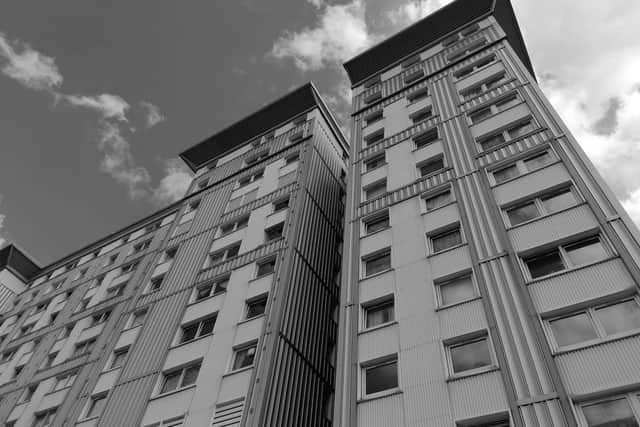A place of concrete and bin chutes. A place I called home - Allan Crow
and live on Freeview channel 276
Returning during lockdown for the first time in 40-plus years, I find overgrown grassy carpets, and trees everywhere, but much of the fabric of the Calders hasn't changed.
I moved into Wester Hailes in Edinburgh as a young kid. We were allocated a flat seven floors up in Cobbinshaw House, one of three multi-storey blocks which still dominate the Calders skyline.
Advertisement
Hide AdAdvertisement
Hide AdFrom the kitchen we watched the traffic as if they were toy cars, and saw the shifts clocking in and out of Burtons' biscuit factory. From the living room we looked across the entire estate, over the roof of Sighthill Primary, and on past Arthur's Seat


The building had two lifts, one with what looked like space for luggage at the back. Locals claimed it was to slide coffins in after folk died, otherwise they had to be carted out at a 45-degree angle until they reached the ground floor. I so want that story to be true.
The caretaker would occasionally tire of folk having a pee in the lift and chuck down strong bleach, giving them an eye-watering aroma come Sunday morning when you went down for your newspapers.
There are grassy areas where we had three walls to stott a ball off after doing our homework; an activity that usually ended when some had had enough of the noise reverberating around the buildings, and a window flew open to tell us to shut it because they were on nightshift.
Advertisement
Hide AdAdvertisement
Hide AdOne of my earliest memories of living so high up was going to the cinema to see Towering Inferno. There's a scene when the fire chief explains his ladders can only go up to the seventh floor. I headed home strangely re-assured...
Walking round the front of the multi-storey brings back memories of the bin room.
One giant chute ran the height of the building, and you tipped your rubbish in. If it stuck - which it often did - you got your broom, turned it upside down and rammed it in until something gave and everything plummeted into a giant metal box at the bottom. That room always stank.
We eventually moved out of Cobbinshaw House across to Calder Drive on the other side of the shops. The square had flats on three sides and a children's home on the other. In winter we'd throw snowballs at its windows.
Advertisement
Hide AdAdvertisement
Hide AdIt feels much, much smaller too, and our old flat, on the top floor, appears to be empty.
Wester Hailes may be tired and frayed, but much of it is also new. The Water of Leith has been opened up to provide a path up to Kingsnowe, where the grass is always perfectly manicured, the old multi-storeys at Hailesland have long since been pulled down, and there's now a multiplex cinema where a grim old office block once stood.
It remains home to some 10,000 people; an overspill area built originally with next to no facilities. The architects did the bare minimum to make residents feel like this was home.
But it is.
Wester Hailes and the Calders are part of the Edinburgh that tourists don't get to see. They don’tt have the street cred of Leith with its Trainspsotting past and bohemian chic of today, and they have a reputation which folk, who have never set foot in the place, assume is the gospel truth.
Walking round the Calders, for the first time close to 40 years, sparked nothing but many memories of good times with good friends. A place I called home.